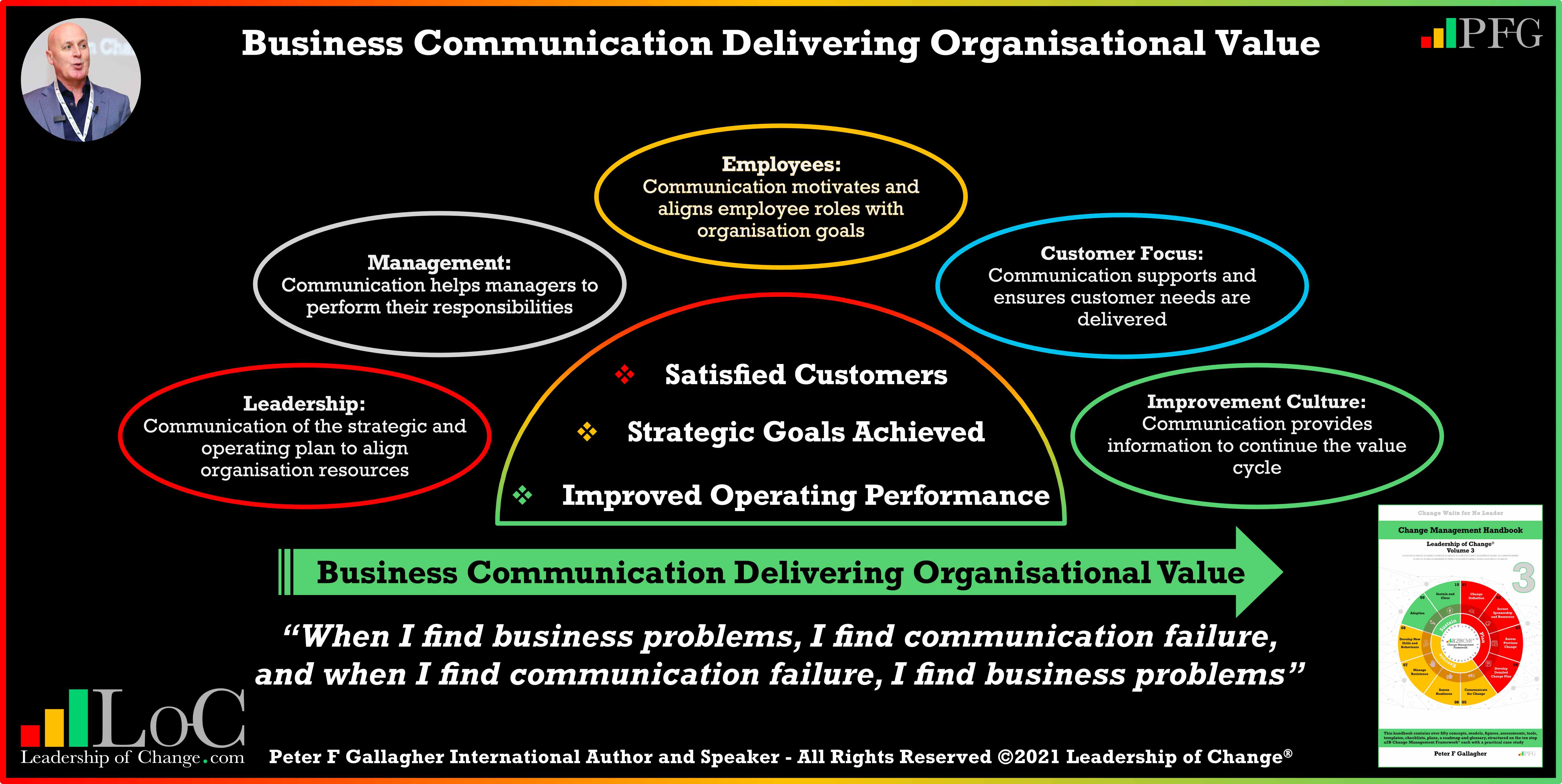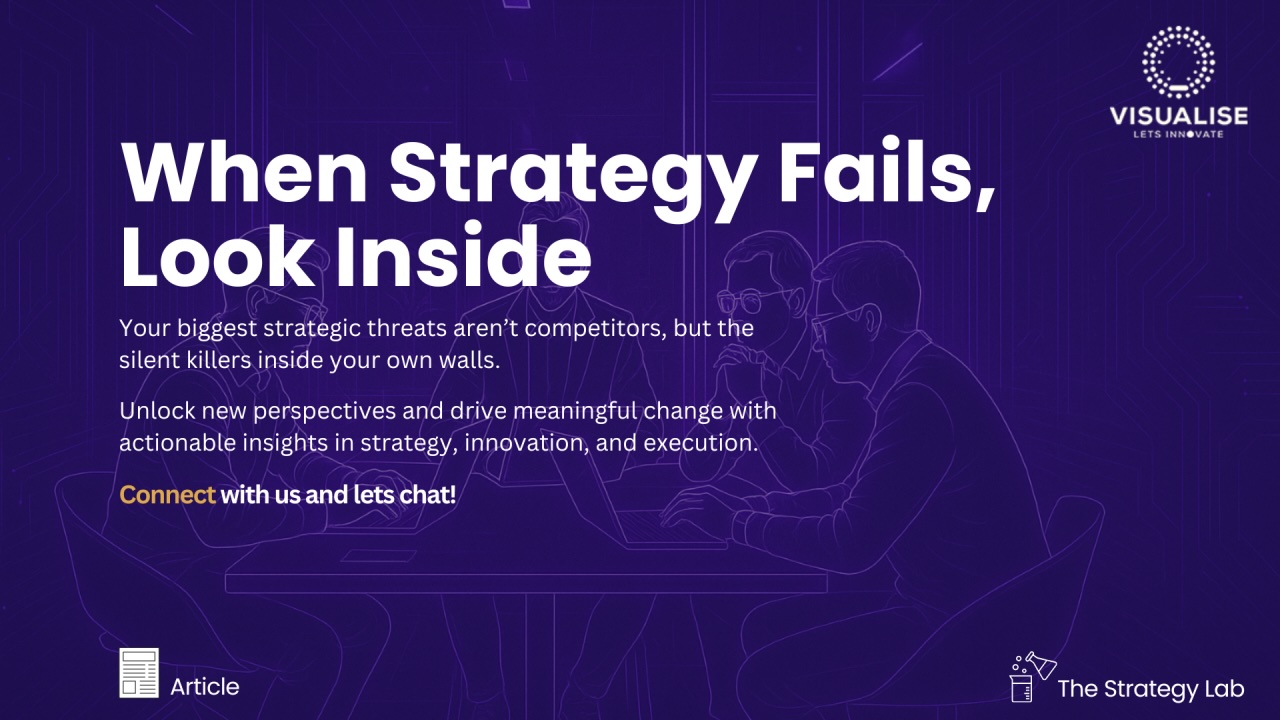May01

Effective business communication is at the heart of successful organisations, it acts like the blood in our bodies, but instead of supplying vital oxygen and nutrients, communication supplies information and motivation. Everything you do in the workplace results from communication. Business Communication is fundamental within an organisation to bring about coordination between the leadership, managers, employees, teams and departments, allowing them to focus on their customers. Communication provides the feedback that enables a cycle of continuous improvement.
“When I find business problems, I find communication failure, and when I find communication failure, I find business problems”
As a Business Improvement consultant with over 30 years’ experience, delivering operations or projects in over twenty countries, I recognise that at the core of nearly all business problems there is invariably some communication failure. Employees may not understand the strategy or how they fit because it was not communicated properly. It can be the lack of communication between two functions, Head Quarters and Division or two individuals at logger heads. It can be Operating Procedures not communicated properly across an organisation or insufficient communication of a change. The result is usually the same, poor financial performance, damaged relationships and disgruntled customers.
Important Elements of Organisation Communication:
~ Leadership: Communication of the strategic and operating plan will align the organisation’s resources towards the vison, goals and customer requirements. Failure to communicate this effectively will undermine the entire strategic effort and will erode trust in the organisation’s leadership. This failure will have a direct impact on the employee, the organisation culture, the ability of the organisation to satisfy customers and, more importantly, stakeholder value. Leadership must implement a proficient communication system and process that sets the organisation up for success.
~ Management: Management’s ability to effectively communicate with their team will help them in performing their responsibilities and successfully execute them. Managerial tasks such as planning, organising, directing and controlling cannot be conducted without communication. Good communication within an organisation can help foster cooperation between members of management, functions, team and individual employees. Communication is a motivational tool for management to influence the performance of employees. Management’s communication skills will define success in their role, strong communication skills could lead to promotion but if you don't like communicating with your people, you're probably in the wrong job.
~ Employees: Communication should motivate and align employee roles with an organisation’s vision, goals and direction. It empowers the employees, the organisation’s greatest asset, to deliver customer satisfaction and organisation value. Communication should create transparency and a trusting culture. Individuals will feel valued, listened to, an important part of a cohesive team and will work towards a common goal. Regular internal communication will lead to an improved work ethic if an employee’s achievements are recognised. These highly motivated employees will be empowered and understand how their role delivers customer requirements and organisation success.
~ Customer Focus: Communication with the customer is essential to satisfying, if not surpassing, their needs. Having a proficient internal communication system and process is the foundation to building strong external customer communications and focus. Effective Communication will support the organisation in getting to know your customers and better fill their needs. The organisation can then focus their resources and expertise on supplying customer needs and in turn become a trusted supplier. Continuous communication and feedback gathering will build a long-term profitable business relationship with your customers.
~ Improvement Culture: Continually improving the organisation’s communication systems and processes will provide the information and data to continue the value cycle from developing more challenging strategic goals through to more satisfied customers. Again this starts with leadership communicating the organisation mission, values, vision, strategy, and measurements. Managers plan, organise, direct, control and motivate employees. Employees understand their role and are empowered to surpass customer expectations. As a result, the customer remains local, the market recognises the expertise and new customers join to deliver organisation value. Thus, proficient communication enables step improvement towards a culture of continuous improvement and customer satisfaction.
Summary: Communication is at the heart of the organisation, supplying the life blood to operate. Hence, one cannot overlook the importance of communication in delivering organisational value. As usual, it starts with leadership putting in place a proficient communication system and process to create a culture in which effective communication can flourish. It means ensuring that communication flows through the organisation from the top to the bottom and with the customer. It communicates the strategy and operating plan, clearly articulating how each person has a role in delivering value for the organisation. It should have a proactive feedback loop to allow for questions and challenge.
“Effective business communication is at the heart of successful organisations, it acts like the blood in our bodies, but instead of supplying vital oxygen and nutrients, communication supplies information and motivation”
Article source: https://www.peterfgallagher.com/single-post/communication-business-communication-delivering-organisational-value
#LeadershipOfChange
#ChangeManagement
#ChangeManagementGamification
#a2BConsulting C-Suite Change Consulting
Keywords: Business Strategy, Change Management, Leadership
 From Recognition to Responsibility: Building a Portal for a Planetary Civilization
From Recognition to Responsibility: Building a Portal for a Planetary Civilization Are You Setting The Direction?
Are You Setting The Direction? There Seems to be Some Confusion: Exit vs Succession
There Seems to be Some Confusion: Exit vs Succession  When Strategy Fails, Look Inside
When Strategy Fails, Look Inside The Modular Ascent: Integrating Gemini 3, V-JEPA, and World Models for Aviation AGI
The Modular Ascent: Integrating Gemini 3, V-JEPA, and World Models for Aviation AGI